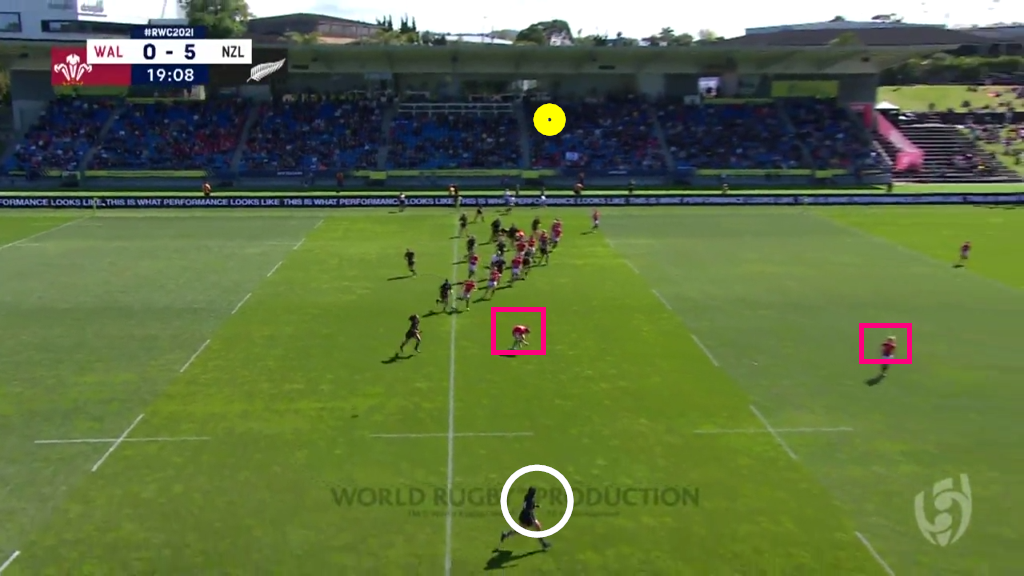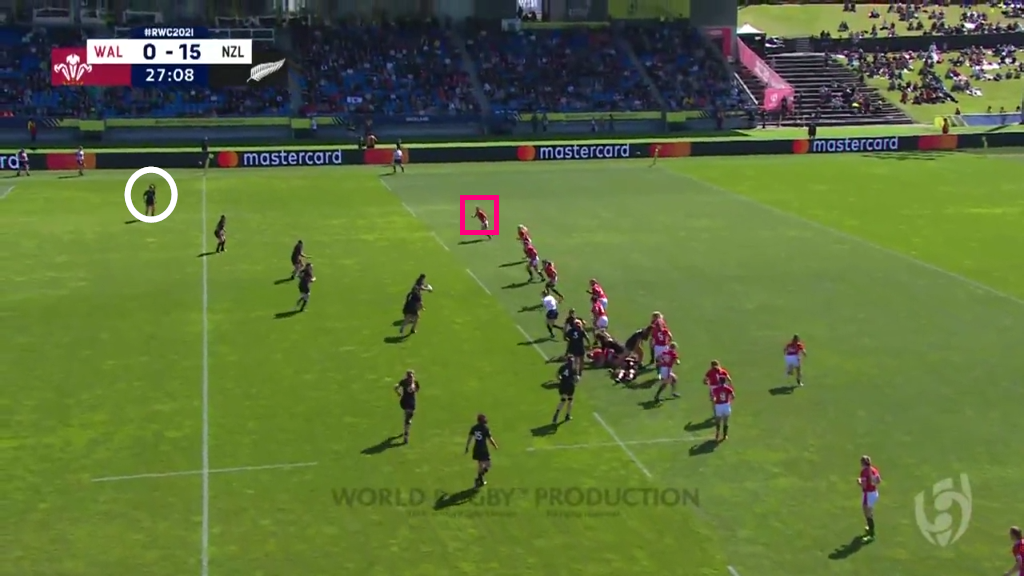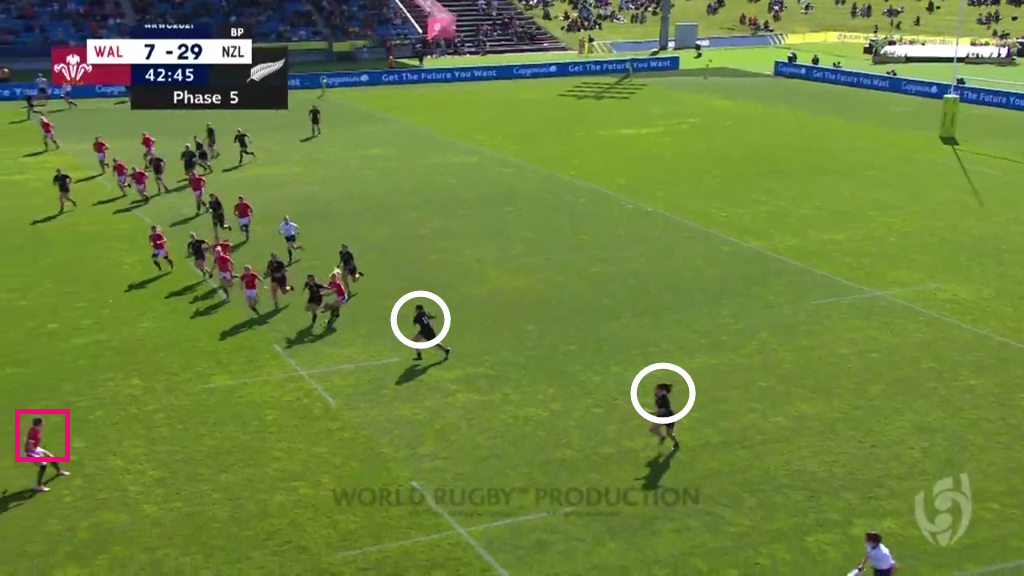One of the great advantages enjoyed by the All Blacks with the ‘three wise men’ – Sir Graham Henry, Sir Steve Hansen and Wayne Smith CNZM – at the helm of the men’s game was the accuracy with which they identified their platforms for attack. There was always complete clarity about the best launchpads (Set-piece? Kick return? Turnover?) and the optimal field position for offensive starter plays.
Two thirds of that brain’s trust is now coaching the Black Ferns at the Women’s World Cup in New Zealand, and it is already clear that nothing has changed. The light, finessed coaching touch of ‘the Professor’, and the absolute clarity about the ‘where’ and ‘how’ of the attack was much in evidence during the recent group match against Wales, which New Zealand won by 56 points to 12.
The Black Ferns did not want to stagnate in a set-piece battle against the Welsh, and any view of the early scrums and lineouts would illustrate why that was the case. Their plan was to keep the ball alive, and it started with kick-off receipts and the exit strategy derived from them. Wayne Smith rejected the orthodox kicking option and decided to use kick-off receipts from the New Zealand 22 as a primary platform for attack with ball in hand.
That was the ‘Where’. The ‘How’ turned out to be a very challenging (for the defence) combination of vertical and horizontal offensive strategy:
.png)
The first part of the plan is the ‘vertical’: a series of pick and go’s up the middle in order to condense the Welsh defence around the ruck. After the initial take by wing Portia Woodman, two Black Fern forwards angle their cleanout off to the left to create a corridor up the guts for second row Maia Roos. The two Welsh guards at ruck-side are too loosely connected and Roos is able to make ground all the way up to midfield.
After one more drive close-in, New Zealand are ready to unveil the second part of the program:

The drives have automatically pulled the edge and backfield defence in towards the middle of the field, and the quickest way to exploit the space created is via a cross-kick over to right wing Renee Wickliffe, with full-back Ruby Tui in support. Three plays cover all the ground between the two 22’s in a perfect mix of vertical and horizontal attacking strategy.
After that success at the end of the first quarter, it was a case of ‘rinse and repeat’.
On this occasion, number 8 Charmaine McMenamin makes the catch from the restart, hooker Georgia Ponsonby makes the break straight between the two Welsh guards, and number 7 Kendra Reynolds takes the ball on over halfway.
Having completed the vertical part of the task successfully, it is time for the horizontal finish:

As in the first example, all the Black Ferns want to do is create a situation in which their back three of Wickliffe, Tui and Woodman can operate in space. Although the Wales D eventually gets back to Woodman as the ball is moved towards the left wing, she is already moving at speed and in a position to use her power in the tackle and nimble footwork against the tacklers opposite.
The final example occurred at the beginning of the second period:
This time around, Wales have done their due diligence and inserted an extra defender at the back of the ruck, but the Black Ferns still make enough progress through the middle to make the shift wide a realistic option on the following play:

The Welsh right wing is defending deep in the backfield and sliding off, and that leaves the two New Zealand centres Theresa Fitzpatrick and Sylvia Brunt, along with Woodman, all the space they need in order to bring play up to the Welsh 22 with a neat offload.
The exit strategy from Welsh kick-offs bore the unmistakeable stamp of ‘the Professor’ of modern professional coaching, Wayne Smith. If you see an opportunity to attack, it does not matter where on the field it happens to be. ‘Smithy’ and ‘Ted’ obviously saw a real possibility from New Zealand kick-off receipts, and they designed a plan around it.
Summary
The ‘How’ involved a sequence of pick & go plays straight up the middle designed to compress the Welsh defence around the ruck, followed by a shift wide via the cross-kick or though the hands. The brain’s trust knew that if they could get the ball into the hands of Tui, Woodman and Wickliffe with room to move, only good things could result. They were right.
.png)











.jpg)

.jpg)







